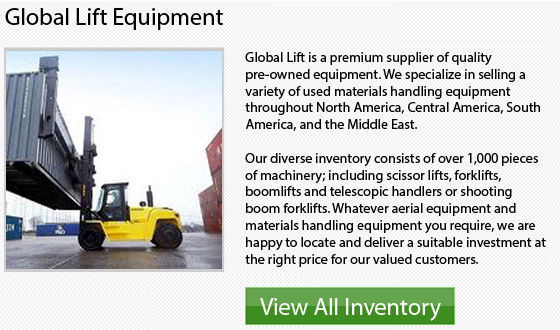
Below are add-ons that are very helpful for narrow aisle lift trucks:
Side shift: The side shift option allows the lateral movement of the load without having to move the truck. This allows loads to be placed with much more accuracy.
Tilt mast: The tilt mast option allows the forks to shift backwards and forwards. This is great in situations where loads aren't entirely level. To gain greater stability while moving a truck which is loaded, the mast could be tilted backwards.
Extendable forks: Extendable forks help the reach of a forklift to allow for the stacking of pallets one in front of the other. This is referred to as double deep loading.
Operator platforms: Operator platforms allow some NA lift trucks to lower and raise the operator while the forks are being raised or lowered. This provides utmost control and visibility when dealing with loads at heights of 6 m to 9 m.
Lift Truck on a Ramp
Operators need to be correctly trained and should be tested and licensed. It is important for anyone using a lift truck to be very knowledgeable about safety concerns and rules. Drivers need to know how to adjust in situations where the load weight changes the center of gravity or on uneven surfaces. Safety measures include the safe operation of a forklift on a ramp, that is a frequent occurrence since the operator would usually have to drive down and up ramps to unload and load containers.
Suggestions for Utilizing a Lift Truck on a Ramp
1 Drive slowly when approaching a ramp and while driving up and down the ramp. The risk of mishaps is higher when driving fast since this could upset the equipment's center of gravity.
2 Drive the forklift in reverse when moving up an incline on a ramp while not carrying a load.
3 While moving down an incline on a ramp with no load, drive forward.
4 While moving down or up a ramp while carrying a load, tilt the forks back a little to shift the load's center nearer the front of the machinery.
5 In order to make the load more stable, drive forward up a ramp when carrying a load.